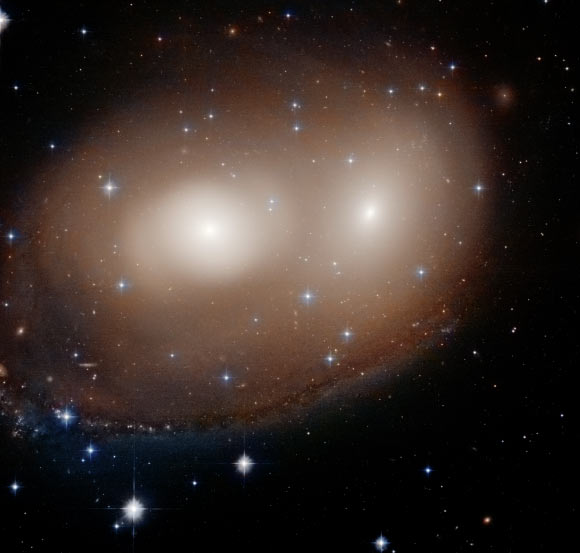Two massive lenticular galaxies, NGC 2292 and NGC 2293, approached one another too closely in the distant past, gravity causing them to affect each other and slowly merge into one giant galaxy.
NGC 2292 and NGC 2293 are located about 120 million light-years away in the constellation of Canis Major.
Both galaxies were discovered by the English astronomer John Herschel on January 20, 1835.
The pair belongs to a galaxy group known as LGG 138; other members of the group are NGC 2280, NGC 2295, ESO 490-G010, and ESO 490-G045.
“If you mix two fried eggs together, you get something resembling scrambled eggs. The same goes for galaxy collisions throughout the Universe,” Hubble astronomers said.
“They lose their flattened spiral disk and the stars are scrambled into a football-shaped volume of space, forming an elliptical galaxy.”
Continued...
Source
NGC 2292 and NGC 2293 are located about 120 million light-years away in the constellation of Canis Major.
Both galaxies were discovered by the English astronomer John Herschel on January 20, 1835.
The pair belongs to a galaxy group known as LGG 138; other members of the group are NGC 2280, NGC 2295, ESO 490-G010, and ESO 490-G045.
“If you mix two fried eggs together, you get something resembling scrambled eggs. The same goes for galaxy collisions throughout the Universe,” Hubble astronomers said.
“They lose their flattened spiral disk and the stars are scrambled into a football-shaped volume of space, forming an elliptical galaxy.”
Continued...
Source






















